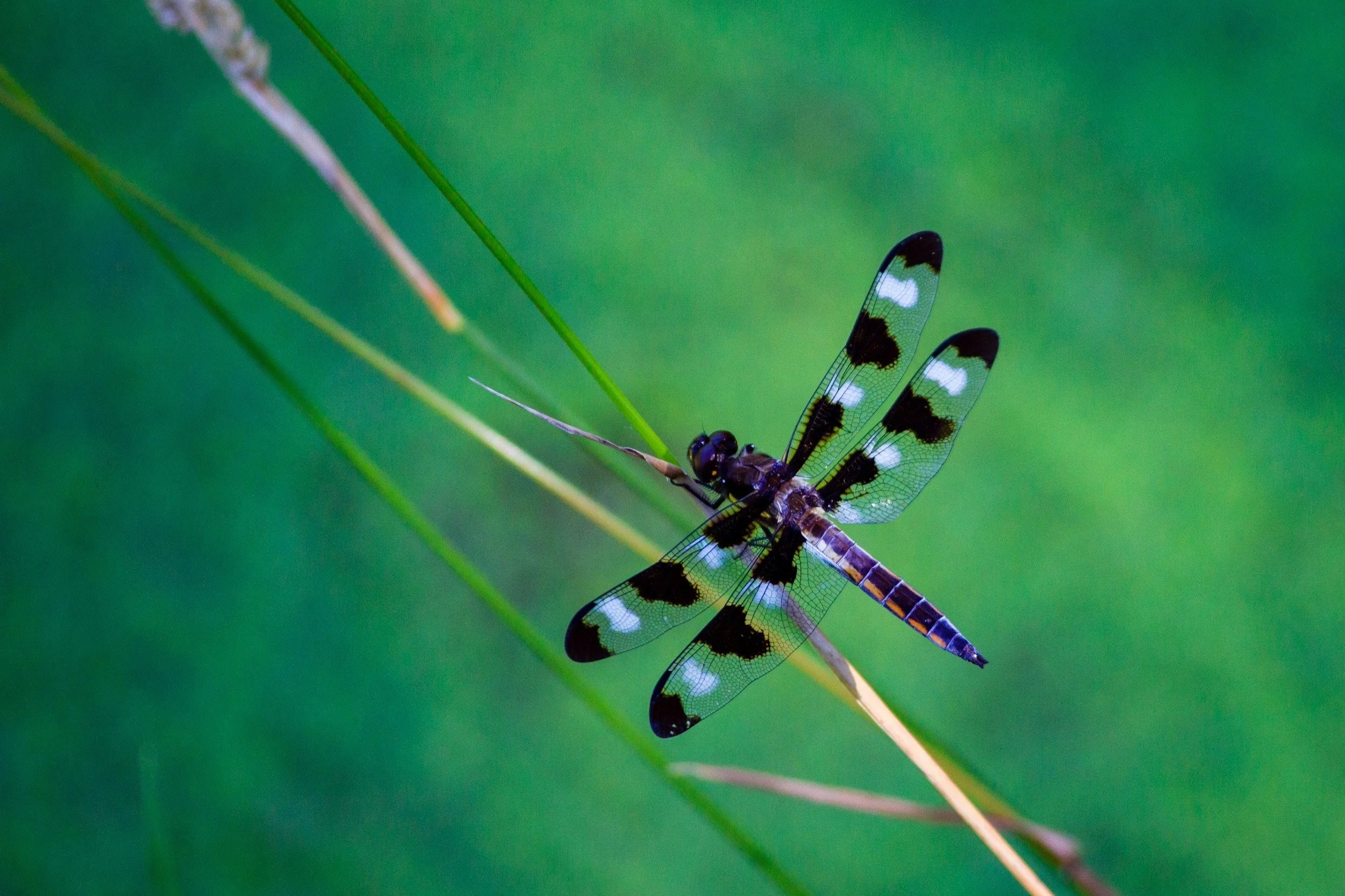The Dragonfly Lifestyle: An Introduction
You may have heard me talk about the Dragonfly Lifestyle.
It’s a model for transformative, Soul-directed evolution that reminds us to trust the process, and it’s become foundational to much of the work I do both internally and with my clients. In the coming months, I’ll be sharing a series of blog posts that delve deeper into this model, starting here – with the basis of why I resonate so strongly with the dragonfly, and what we can learn from their transformations.
A dragonfly starts its life as a nymph; flightless and living in the muck. In fact, much of a dragonfly’s life is spent submerged – but it’s also here that the nymph feeds, gaining the nourishment from the waters that it needs to eventually take flight.
Unlike caterpillars that go into a cocoon to transform into butterflies, a nymph transforms into a dragonfly in the midst of its daily life. But eventually, there is a moment at which the nymph is ready to leave. It molts up to 15 times before finally moving out onto dry land and shedding its exoskeleton, revealing the capacity to fly that was there all along. The nourishment of the waters have fed the force that splits the skin down the nymph’s back, encouraging the wings to unfold.
So, why do I tell you all of this?
Our human journeys look much the same. Many of us spend years living underwater, struggling with the ongoing effects of abuse, trauma, addictions, codependency, financial insecurity, systemic oppression, and the like. We are alive, but we are not free to emotionally engage with our world, think clearly, or engage our power of choice as conscious creators. We may be unaware that we are living this way, especially if we were born into these situations.
Yet at some point, something inside of us sparks. It may be in reaction to an event or trauma, it may simply dawn on us that something has to change and now is the time to change it. Essentially, we ask “Is this all there is?” and some part of us responds “No”. This time, we hear that voice, listen to its deeper rumblings, get curious, and take action in a way we haven’t before. This is the moment of separation - when our transformation begins.
Dragonflies are transformational creatures by nature.
We can learn a lot about our own metamorphoses by mirroring theirs, in the same way that we can take other cues from the natural world.
During periods of transition or transformation, most people try to make sense of their experiences by relating them to the structures, behaviors and beliefs that are falling away. This doesn’t work. The dragonfly nymph doesn’t question what’s happening during its metamorphosis; it simply responds to instinct. It doesn’t plan, control, or strategize to ensure it gets to where it’s going. It doesn’t know where it’s going or what will happen next. And neither do we.
Of course, unlike the dragonfly, we humans have the capacity to doubt. Many of us also have a resistance to change that is born from fear – of death, of being cast out of our tribe, of being inherently broken, unworthy, and unfixable. And of course, there’s the added layer of the natural human need for belonging.
But we also have the capacity to choose. We can choose to trust our Soul’s direction, and to do the work of softening feelings like shame and guilt, or beliefs around responsibility, duty, or freedom. We can learn to treat ourselves with greater empathy, allowing ourselves to understand that the knowing necessary to take flight has always been within.
There’s no way to predict who or what we will become when we enter a cycle of transformation. We must simply take the next indicated step, in the dark, while trusting the guidance we receive. It’s through iterative, conscious living that we become capable of flying. The dragonfly doesn’t even resemble the nymph, and we, too, transform in ways that make us both unrecognizable and still, essentially, ourselves.
If you’re navigating a transformation – or feel that you are on the precipice of one – intuitive guidance can be a wonderful support. If you’re seeking greater clarity and understanding, I’m here to help. Learn more about working with me.


